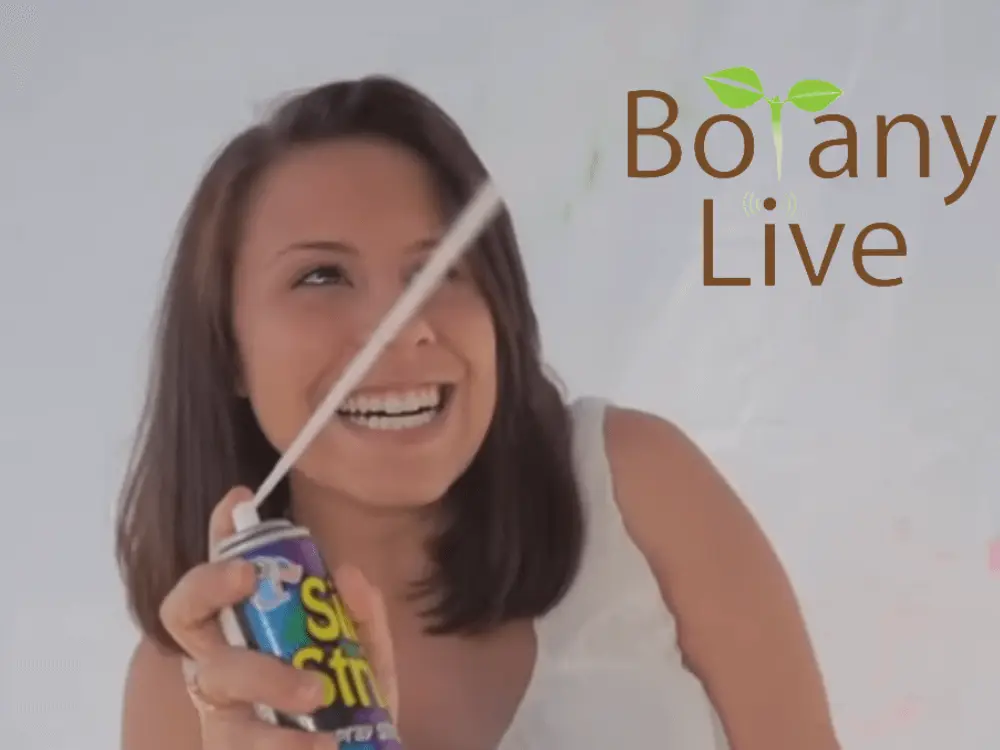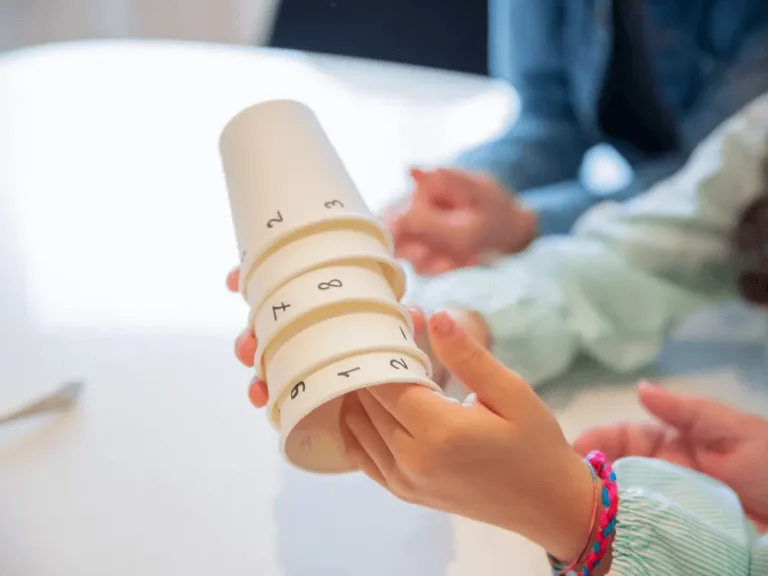Is Silly String Biodegradable? Uncovering it’s Environmental Aspects
Silly String, a beloved and playful toy, has found its way into our hearts and celebrations. Either its wedding ceremony or a Birthday party, you will find it in the bands of your friends, spreading the sticky and silly strings all around. However, beyond the laughter and joy it brings, we must also consider “is silly string Biodegradable?. The filth it causes, the loss it creates to the aesthetic values of the party area and visual pollution it produces.
This article deeply explore all the related aspect of silly strings, exploring how they are made, their playful appeal, and the potential consequences they pose to the environment.
This article will help you to be aware of all the pros and cons of using this non-biodegradable product. By understanding these aspects, we can make informed choices and enjoy the magic of silly strings responsibly.
What is Silly String?
Silly String is a delightful aerosol-based toy that fascinates both children and adults alike. It is filled within the can. Upon pressing, the can releases a colorful foam in long and impulsive arcs. It also adds an element of surprise and excitement to any celebration.

This fun and interactive toy have become a staple at birthday parties and festive gatherings. All the joyous events, where it adds a touch of magic, becomes memorable. This idea was invented in 1972 such as a spray-on cast material for orthopaedic patients.
What are Ingredients of Silly String?
All the charms and cheers Silly string adds to the parties and occasions lies in its secret formula, ingeniously crafted to ensure maximum fun. The mixture typically contains liquid, resin, and plastic, with Polyvinyl Chloride (PVC) often being used to achieve the desired texture and stretch.
The blend of ingredients with higher plasticity contributes to the toy’s entertaining properties. Moreover, the entertainment may last for longer than any other foams and sprays. However, it is essential to consider the impact of these ingredients on the environment.
When Was Silly String Invented?
The history shows that the invention of silly string dates back to the 1972s. it was initially invented by Leonard A. Fish and Robert P. Cox for practical applications. They wanted to have a sticky mixture with better plasticity for casting and moulding. They intended to use this spray-on cast material for orthopedic patients.

They invented this foamable and resinous plastic material for medicare purpose. However, its immense potential for delighting people soon led to its transformation into a beloved and magical toy “Silly String”. Since then, silly string has continued to captivate hearts and spread smiles worldwide.
How Silly String Propelled from the Can?
This magical mixture is contained within a can. The magic of this silly string lies in its unique mechanism of propulsion. When the nozzle is pressed, the pressure from the propellant, typically an aerosol mixture, combines with a carefully crafted formula containing liquid, resin, plastic, and solvent.
The result of this press is a playful explosion of foam that captivates everyone around. The propulsion from the can allows the colorful strings of foam and microplastics to travel through the air, leaving a trail of delight in their wake.

The giant can of silly string is a sight to behold, with endless fun and excitement. Its ability to propel colorful foam into the air brings an atmosphere of laughter and joy, turning ordinary moments into cherished memories. Whether it’s a birthday celebration, a wedding reception, or a festive gathering, silly string brings an air of playfulness, making the occasion all the more special.
Summary
Silly String, a beloved toy captivating hearts and celebrations with colorful foam, also raises environmental concerns. Though invented for practical uses by Leonard and Robert in 1972, it became a playful toy. The mixture typically contains liquid, resin, and plastic, with Polyvinyl Chloride (PVC) often being used to achieve the desired texture and stretch.
How Green is it… is Silly String Biodegradable?
As we indulge in the playful acts of spraying Silly String, we must also consider its green status. The toy, with foam and plastic containing liquid resin, and solvent is not environment friendly. Among these components, the presence of propellants in aerosol cans raises concerns as they can contribute to air pollution and environmental degradation. To ensure the eco-friendliness of Silly String, manufacturers and consumers alike must consider the use of alternative, more sustainable propellants to reduce the toy’s carbon footprint.
Why Silly String is Non-Biodegradable?
Although silly String brings boundless fun and excitement yet it’s essential to explore its environmental impact, particularly its non-biodegradable nature. There are several reasons behind Silly String’s non-biodegradability, examining its ingredients, formulation, and the implications this has on our environment. Understanding these aspects will empower us to make informed choices, seeking eco-friendly alternatives and taking steps towards a greener, more sustainable future.
The Composition: Ingredients and Formulation
Silly String’s non-biodegradable nature is intricately tied to its formulation, which comprises a mixture of ingredients. At the core, it contains resin, plastic, and polymer, with polyvinyl chloride (PVC), microplastics, and propane being a common component. These substances contribute to the toy’s elasticity and texture, creating the playful foam. Additionally, Silly String’s aerosol delivery system utilizes chemical propellants to release the foam with excitement and flair.
The Persistent Plastic Predicament
Plastic, an integral part of Silly String’s composition, is infamous for its non-biodegradable nature. When discarded, plastic particles take centuries to decompose fully. Thus they are call slowly degradable pollutants. Moreover, Silly String cans and remnants contribute to plastic pollution, harming ecosystems and marine life.
Additionally, plastics and polymers when starts decomposing, they produce microplastics. The contribution of microplastics in the air and water pollution is extremely damaging. As plastics break down into smaller pieces known as microplastics, they pervade the environment, posing a threat to wildlife and potentially entering the food chain.
Summary
As we revel in the joy of Silly String’s playful foam, we must remain conscious of its environmental consequences. When Silly String is sprayed, its remnants often end up on the ground, contributing to litter and pollution. Additionally, improper disposal of aerosol cans can lead to harmful chemicals seeping into soil and water sources, further exacerbating the environmental impact.
Biodegradable and Non-biodegradable Materials
Biodegradable
Non-Biodegradable
Safety concerns of Silly String
Silly String has carved a niche for itself with its vibrant hues. However, besides this, there lies environmental impacts and safety concerns. Understanding how to handle and dispose of Silly String responsibly is essential to safeguarding both the environment and our well-being.
Handling it safely as it is Flammable
Silly String can add a burst of exuberance to any event, but it is crucial to handle it with care due to its flammable nature. When Silly String comes into contact with an open flame or intense heat source, it can ignite and pose safety hazards.
As guardians of our own well-being and that of others, we must exercise caution when using Silly String, ensuring it remains far from potential ignition sources. Especially at the birthday parties and Halloween, we must consider this aspect.
Ensuring the well-being of Animals
We must also consider the well-being of our furry friends. Silly String’s colorful foam, while enjoyable for humans, may not be so for animals. Accidental contact with animals can cause distress and discomfort.
The pets may attracts towards them, even they may eat them in excitement. Therefore, when incorporating Silly String into our celebrations, it is essential to do so in a manner that keeps animals safe and free from unnecessary anxiety.
Silly String Disposal Guidelines
While Silly String brings momentary joy, its environmental impact can linger if not handled properly. Disposing of Silly String cans requires a mindful approach.
Ensure that aerosol cans are emptied entirely before recycling, and never dispose of Silly String in nature, as its non-biodegradable components can contribute to pollution and harm ecosystems.
How long does Silly String last once sprayed?
As the playful strings of Silly String fill the air, one may wonder, how long does it linger? The answer lies in its composition – Silly String’s foam is not designed for longevity. After spraying, the foam gradually dissipates, usually lasting a few minutes to an hour depending on environmental factors and the composition of the strings.
Is Silly String Toxic?
One cannot deny the pleasure we get by this playful toy, Silly String. The vibrant aerosol-based toy that adds a splash of color and fun to celebratory occasions may be toxic too for us and our pets.
Beneath its playful façade lies a lingering concern – is Silly String toxic? This question calls for a deeper understanding of its composition and potential impact on both the environment and our well-being.
Silly String and its Plastic Impact
The captivating strings are not without consequences. The main culprit lies in its plastic composition. Silly String often contains a blend of plastic polymers (PVCs and Propane) and propellant, which contribute to its non-biodegradable nature. These are all the materials those are used in packaging and labelling. When sprayed, these plastic particles can linger in the environment for an extended period, contributing to the ever-growing problem of plastic pollution.
The accumulation of plastic waste in ecosystems poses risks to wildlife and can lead to detrimental effects on the delicate balance of nature. The most damaging impact is its incorporation in aquatic food chain and marine life.
Impact on Wildlife and Ecosystem
As the playful foam of Silly String dissipates into the air, its journey doesn’t end there. The non-biodegradable components find their way into various environments, including forests, water bodies, and urban landscapes. Moreover, wildlife and marine creatures may inadvertently encounter Silly String residues.
Unfortunately, animals can take these colorful plastic pieces for food, leading to ingestion and potential harm. The consequences of plastic ingestion on wildlife and the overall ecosystem are grave, creating a ripple effect that impacts the entire food chain.

Cleaning of Silly String
Silly String, the vibrant aerosol toy cherished by many, has become an important element of celebrations and joyful gatherings. It is also essential to consider the environmental impact of this delightful novelty. Beyond the laughter, we must address the responsible cleaning and safe disposal of Silly String to ensure a positive experience for both us and the world around us.
How to Get Silly String Out of Hair?
Ah, the innocent joy of Silly String fights can sometimes lead to the mess. This colorful foam may stick in our hair. Fear not! A few simple steps can restore your locks.
- Start by gently combing out the Silly String using your fingers or a wide-toothed comb.
- Wash your hair with a mild shampoo, thoroughly rinsing out the remnants of the playful foam.
Does Silly String Stain?
The most fearful question is, does it leave stubborn stains behind? While Silly String is generally non-staining, it is crucial to address the situation promptly if stains do occur.
For fabrics, immediately blot the area with a damp cloth and then wash the fabric following the care instructions. On hard surfaces, a gentle scrub with soap and water should do the trick.
Does Silly String Stain Clothes?
Are you wondering about how to Get Silly String Out of Clothes? If Silly String finds its way onto your outfit, don’t fret. Tackle the stain with swift action.
- Shake off any excess foam, and avoid rubbing the stain, as it might spread further.
- Rinse the affected area with cold water and then pre-treat the stain with a stain remover or liquid detergent.
- Finally, wash the garment as per the fabric’s care instructions, and voilà, your clothes will be back to their pristine state.
Cleaning Up Silly String Outside
The exuberance of Silly String battles outdoors may result in traces of foam on various surfaces. To clean up the mess;
- Start by gently removing as much Silly String as possible using your hands or a soft cloth.
- For hard surfaces, a mixture of soap and water can effectively remove the foam.
- If dealing with grass or plants, ensure thorough watering to dilute the residue.
Removing Dried Silly String from Car
Accidentally leaving Silly String on your car overnight can result in dried and permanent stains. Fear not, there’s a way to restore your car’s shine.
- Gently scraping off the dried foam using a plastic card or spatula, being careful not to scratch the car’s paint.
- Soak a cloth with warm soapy water and gently scrub the affected area.
- Rinse the cloth regularly to avoid spreading the stain further.
- Finish with a clean wet cloth to wipe away any soap residue.
Does Silly String Ruin Car Paint?
It is essential to act promptly to prevent any lasting damage. The foam itself is unlikely to cause significant harm, but the dyes used in some Silly String products might cause staining if left on for an extended period. Thus, timely cleaning is key to maintaining your car is important.
Safely Discarding Silly String
Silly String cans are often made of recyclable materials, so be sure to check your local recycling guidelines for proper disposal.
- Never release the foam into nature, as it can harm wildlife and contribute to environmental pollution.
- Enjoy the fun while safeguarding the environment for future celebrations.
Various Eco-friendly and Biodegradable Alternatives
After reading the whole article till now, you are aware of the environmental impact that the silly strings can have on our planet. To pave the way for more sustainable festivities, let’s explore a range of eco-friendly and biodegradable alternatives.
Biodegradable and Eco-Friendly Party Poppers
When it comes to the sustainable solutions, biodegradable and eco-friendly party poppers take center stage. These delightful alternatives release a shower of confetti, adding a touch of magic to any gathering. Made from environmentally responsible materials, such as biodegradable paper or plant-based components, party poppers decompose naturally, leaving no trace of harm to the environment.
Exploring Plant-Based Alternatives
As we seek to reduce our ecological footprint, exploring plant-based alternatives to Silly String presents an array of eco-conscious choices. Party streamers crafted from sustainable materials like jute, hemp, or bamboo are excellent options.
All these are natural fiber streamers add a touch of elegance to the occasion, but they also minimize the environmental impact.
Embracing Sustainability in Party Planning
A mindful approach to party planning can significantly impact the environment.
- Embrace sustainability by opting for reusable and biodegradable party decorations, such as natural fiber banners.
- Say goodbye to single-use plastics and embrace compostable dinnerware made from renewable materials like corn starch or sugarcane.
- Encourage recycling and composting stations, guiding guests to dispose of waste responsibly.
- Provide reusable beverage containers, reducing the consumption of single-use plastics.
With these efforts, every element of your party becomes a statement of environmental significance. You can reduce your party’s environmental footprints by taking small but impactful steps. By collectively embracing sustainable practices, your celebration becomes an opportunity to inspire positive change and raise awareness about caring for the environment.
Related Sources
- https://entertainment.howstuffworks.com/silly-string2.htm
- https://www.wired.com/2015/10/whats-inside-silly-string/
FAQs
I’m Dr Qaiser Maqsood (PhD), a dedicated researcher and expert in Biological Sciences, Gardening, Bio-Diversity, Ecology, and Environmental Sciences. I’m much concerned about Environmental Pollution, Climate Change, Plantation, Gardening, and Global Warming. My passion is to explore innovative solutions in all these fields.
Be aware that we have ONLY ONE EARTH. Protect it!!






